Who was Ray Kroc?

Ray Kroc was an entrepreneur who spread McDonald’s restaurants all over the world. If you’ve ever enjoyed a Big Mac or Happy Meal when you were a child, then you can thank Ray Kroc for that.
In this book, he tells the story of his life. From his early jobs as a salesman to his eventual role as McDonald’s CEO. Today it feels like most super-successful business founders are very young, like Mark Zuckerberg of Facebook who became a billionaire in his 20s. But that wasn’t Ray Kroc’s story. He only started franchising McDonald’s in his 50s! That really shows you’re never to old to chase a dream.
Now let’s jump into the best lessons from Grinding It Out! Starting with #1…
🛠️ 1. Explore While Young: Try many types of work while young to get diverse experiences and skills
While growing up in a small city near Chicago, Ray Kroc worked whenever he could. As a boy, he opened a lemonade stand which was reasonably profitable. He also worked at the grocery store and his uncle’s drug store. With that money, he opened a very small music store with 2 friends, but they didn’t sell enough sheet music and small instrument, so they closed at the end of a summer.
World War 1 came, and Kroc lied about his age to sign up as a Red Cross ambulance driver, but in the end the war was over before Kroc could be shipped overseas. (Interesting side note: one of the boys he trained with was actually Walt Disney.)
After that, his parents wanted him to go back to school, but he didn’t feel that school was a good fit for him. Instead, he began selling ribbon novelties (little decorations that can be sewn on clothes and fabric). He would set up sample areas in hotels, selling these items to women passing through.
Throughout his life, music was important to Kroc. When he was growing up, he learned to play the piano very well. He had a natural talent for it and his mother made him practice for long hours. So the next summer, Kroc got a job playing piano by playing at a dancing hall at the edge of a lake. There he met Ethel Fleming, who later became his first wife. She was working at her parents hotel across the lake.

After that summer, Kroc had another job for a short time, marking up boards for a financial firm near the American Stock Exchange. But what he really wanted to do was go to Chicago to marry Ethel, but his father said he would have to have a real “substantial” job before he could marry. So Kroc became a salesman for the Lily Tulip Cup Company and then got married.
Today many teenagers are expected to already know what career they want to do for the rest of their life—before they’ve tried any type of work! Kroc instinctively knew he had to try different jobs to find out what he liked doing, was good at, and could get paid well for. That happened to be sales.
From a young age, Kroc was ambitious, opening a lemonade stand and tiny music store. He never felt like school suited him, and he preferred to make a living in various ways, from selling novelties to playing piano. So don’t be afraid to experiment in your own career in the beginning.
🎓 2. Learn new skills: Continuously learning new skills can pave your way to future opportunities
In 1922 Ray Kroc began selling paper cups for the Lily Tulip Cup Company. Kroc’s job was to convince store operators of the advantages of paper cups, as back then most restaurants used only glass cups.
Kroc worked crazy long hours. He sold paper cups from early morning until 5 PM. Then he played piano at a radio station from 6 PM to 2 AM, with a two hour break in the middle. The next morning he did it all over again. He did have Sundays off selling cups. Eventually he had Saturday nights off his radio job too, so that became the big night out with his wife Ethel.
After a couple years, his sales began increasing because he became better at selling. Here are some of the most important things he learned:
- Be direct. If he saw his prospect start fidgeting in their chair, then he would cut to the point and asked for the sale. Kroc says most salespeople don’t know when the right time is to stop.
- Customize your pitch to every client.
No self-respecting pitcher throws the same way to every batter, and no self-respecting salesman makes the same pitch to every client.
- Show, don’t tell. Demonstrations can be more powerful than any sales promises. For example, when Kroc was selling cups for milkshakes, he would order 10 milkshakes. Well, after a few minutes, Kroc poured all the melted residue from those metal cups, to demonstrate there was enough in them for one additional milkshake! Then he showed the store owner how they could save this wasted product by using his paper cups with a special metal collar slipped on top.
- One big client can be worth a hundred small ones. Over time, Kroc learned his time was better spent selling to very large companies rather than chasing small individual stores and food carts. For example, in 1930 the Walgreen Drug Company began buying their paper cups from him.
Landing Walgreens as a client wasn’t easy, but here’s how Kroc pulled it off. First he went to the Walgreens store beside their headquarters. At first, the store owner refused to consider paper cups. So Kroc offered the owner 300 free paper cups to try them out.
Well, after a few days, the owner saw paper cups brought in a lot more takeout customers, despite their slightly higher cost, so he was won over. After this, Kroc went to Walgreens management next door, and he told them about this experiment in the one store. The management was convinced, so they ordered paper cups for the rest of their stores. At that time Walgreens was expanding rapidly, and each new Walgreens store meant more sales for Ray Kroc and more money for his employer The Lily Tulip Cup Company.
Kroc worked there for a total of 17 years. He eventually became the best salesman in the company and had about fifteen other salesmen working under him. Those sales skills would prove very useful for him in the next chapters of his life. Much much later in the book, Kroc talks about how he negotiated with McDonald’s suppliers to get the best prices for buns, meat, ketchup, etc. He says all those years of experience selling things to businesses made the difference in his success.
Selling paper cups for 17 years sharpened Kroc’s sales and business skills, which would be key to McDonald’s success in the future. He learned to be direct asking for the sale, customize his sales pitch for each prospect, use demonstrations and go after big clients.
🔄 3. Pivot and Persist: You can always switch directions in your career, if you’re willing to persevere
In the 1920s, ice cream had become massively popular, largely as a result of alcohol Prohibition. Even bars and hotel lounges switched to selling ice cream.
A local businessman was setting up ice cream parlours under the name Prince Castle all over the state. The stores looked like little castles on the outside. Ray Kroc convinced them to start selling milkshakes too. In that first year, Kroc sold them over five million 16 ounce paper cups to put those milkshakes in!
Earl Prince, one of the owners of Prince Castle, invented a new type of milkshake mixer that had a more durable industrial motor and could mix six drinks at a time. He called this the Multimixer.
Eventually Earl Prince proposed that Ray Kroc become the salesperson and distributor for the Multimixer. Kroc loved that idea because his instincts told him there was a lot of future potential in this machine. However, his wife was totally against it. She felt Kroc was risking their whole future and he was too old to start over again. Later she refused to help him out in the new office when he couldn’t afford to hire staff. This was the beginning of a big rift between them.
So at the age of 35, Kroc started a new career. He went to sell Multimixers to restaurant owners all over the nation. He believed they would be eager to buy this revolutionary new machine, but he soon found that was totally wrong. Most restaurant owners preferred to have several smaller machines because if one broke down, they could still sell milkshakes. If the Multimixer broke, then they wouldn’t be able to make money until it was fixed.
Those were very challenging and stressful times. Kroc went almost $100,000 in debt, a huge sum in those days.
I learned then how to keep problems from crushing me. I refused to worry about more than one thing at a time, and I would not let useless fretting about a problem, no matter how important, keep me from sleeping.
By the way, there’s another famous entrepreneur named Phil Knight who talked about being overwhelmed with the demands of starting a business. He pushed through the stress and challenges by saying to himself that “Life is growth. You grow or you die.”
As a college graduate, Phil had started a shoe company based on a “crazy idea,” as he called it. That company eventually grew to be Nike, the biggest sports clothing business in the world. If you want to learn how he did it, then check out our summary of his autobiography Shoe Dog by Phil Knight.
In those Multimixer days he hired a young woman named June Martino as a bookkeeper. She had no training as a bookkeeper, but Kroc sensed she had integrity and a problem-solving personality. In those days he could only afford to pay her a low salary, but promised she could have a great future in the company. 20 years later she would become one of the top executives at McDonald’s.
Kroc travelled to all the restaurant and dairy association conventions around the country. He always sent a dozen sample Multimixers ahead of his arrival and sold them out at the shows. He was working as fast as he could. He landed some big clients like Dairy Queen and Tastee Freeze.
And eventually he was selling up to 5000 units a year!
Yet after 15 years of Multimixers, Kroc didn’t like how market trends were going for the business. It was the mid 1950s, and he knew he would have to find a new product soon.
At 35 years old, Kroc started a totally new career, selling and distributing a new type of milkshake mixing machine. At first he went deeply in debt and found it difficult to make sales, but over time this business grew to selling up to 5000 machines per year.
⚡ 4. Seize Opportunity: Don’t hesitate to act quickly when you see a big opportunity, like when Kroc saw the first McDonald’s
The McDonald brothers came to California in the 1920s. First they did manual labour work in a movie studio, then they opened an unsuccessful movie theatre, finally they scraped together enough money to open a drive-in restaurant. A few years later, their restaurant was getting a lot of customers, but making little profit.

They decided a drive in restaurant was the wrong business model. So in 1948 they totally redesigned their business. The menu was simplified to a handful of items including hamburgers, cheeseburgers, fries, soda and milkshakes.
There were no more waitresses bringing food out to cars like a drive-in restaurant. Rather, customers came to the front window to order.
Most importantly, the food was made on an assembly line, with each worker responsible for a small step in the process. The brothers called this their “Speedee Service System.” At the time, it was a revolutionary idea, but it worked! The new McDonald’s restaurant served high-quality hamburgers, faster and cheaper than any other restaurant. Customers were soon coming in large numbers.
Then Ray Kroc showed up. The brothers had bought 8 Multimixers from his company, more than any other single restaurant. Out of curiosity, Kroc just had to see how they were selling so many milkshakes.
When Kroc arrived in San Bernardino, California, he was soon amazed at the never-ending stream of customers that came to the store for their 15 cent hamburgers.
Later he talked to the brothers Mac and Dick McDonald, who gave him a tour of the kitchen. He was very impressed by their efficient operation. So at the end, he asked them why they didn’t open a series of stores. They said they had enough money, enjoyed their lives now, and didn’t want more problems.
Spontaneously, Kroc offered to franchise the McDonald’s stores himself. (In fact, at that time he was mostly thinking about the money he could make selling milkshake machines if there were more of these stores!) The brothers and Kroc had a great friendly rapport, and before he left San Bernardino, Kroc had a contract signed to let him franchise McDonald’s stores. Each new store operator that Kroc set up would pay a setup fee, then 1.9% of their sales in franchise fees, with 0.5% of that going to the McDonald’s brothers.
Can you imagine that? Kroc saw this very well run restaurant and decided he could be the one to make it popular across the country! He already had a full-time business, a house, wife, and other obligations, but he felt this opportunity was too good to miss. How many of us would have that much trust in our instincts?
When Kroc saw the first McDonald’s restaurant, he was very impressed by its popularity and their assembly line approach to making food. On that first visit, he signed a contract with the McDonald brothers to franchise the store all over the nation.
📝 5. Revise Strategy: Be open to revising your approach, because your first strategy is often not the best one
On April 15, 1955, they opened the first franchised McDonald’s store in Des Plaines, Illinois. That first store was built deliberately near Kroc’s house so he could make sure it was running perfectly. He would drive to the store each morning to help them open, then take the train to Chicago to start his work at the Multimixer office at 9AM.
In 1956 they opened 3 new stores in California, then 8 more in other states. Kroc says those early days were painstakingly hard work, “like trying to ice skate on bare concrete.” But they managed to sign up new store operators one by one. Many of their early store owners were husband-wife teams, with the husband handling operations and maintenance and the wife looking after accounting and personnel.
It was Kroc’s past work from the Multimixer sales that helped them survive while they were getting those first McDonald’s stores off the ground. That sales income was paying all his McDonald’s costs in the early years, including his employees salaries.
Even as the number of stores grew, they were barely scraping by. You see, almost all the store’s profits went to the individual store owners, many of whom were doing very well.
But around this time, Kroc hired another key person. Harry Sonneborn had been vice president of Tastee-Freeze, then he quit and told Kroc that he’d like to work at McDonald’s because it looked very promising. So then there were three in the McDonald’s offices: Ray Kroc, June Martino and Harry Sonneborn.
Harry Sonneborn later came up with the strategy that would make their company very successful. Rather than simply licensing the name, they got into the business of developing the restaurants themselves. Most importantly, they decided they would sublease both the land and the building to the franchise store owners. To accomplish this, they had to get financing, first through bank mortgages, then larger loans through big insurance companies.
Kroc says this was a turning point in their history, the step that made their future success possible. In fact, many business experts say McDonald’s may be better described as an innovative real estate business than a hamburger business.
It all goes to show, if what you started out doing isn’t working, with persistence you may be able to figure out the right strategy.
In the first years of McDonald’s, they made painstaking progress finding new store operators and making sure each store was running perfectly. But they still weren’t making money. So Harry Sonneborn invented a new business strategy based on owning the real estate and building underneath each McDonald’s, which made them successful.
🏆 6. Focus on the fundamentals: Mastering the essential processes of your business is key to success
In the book, Ray Kroc says over and over again that the key to a store’s success is focusing on the fundamentals. He says no special smarts or talent is needed, just the right focus and hard work. In McDonald’s, these fundamentals are Quality, Service, Cleanliness and Value.
When Kroc opened the first franchised store in Illinois, he spent months trying to make the fries just right, like they were in San Bernardino. But no matter what he did, the fries wouldn’t taste the same. He talked with the McDonald brothers, but they said he was doing everything exactly right, so they couldn’t understand what the problem was.

In the end, Kroc talked to a farming expert and found out the reason. In California, the McDonald’s brothers kept their potatoes in double-walled wire baskets behind the restaurant before they cooked them. This allowed air to move through the potatoes. Meanwhile in Illinois, their potatoes were kept in the basement. And the farming expert told Kroc the air helped make the potatoes dry, which converted their sugars into starches, and that’s where the great taste of McDonald’s fries came from. Kroc set up an electric fan to blow air through the potatoes in the basement, and he was relieved when they finally tasted the same as the original McDonald’s!
You must perfect every fundamental of your business if you expect it to perform well.
Many years in the future, McDonald’s would switch to frozen fries, but only after Kroc was sure the taste of the fries would not be sacrificed. That move saved their stores a lot of money in shipping and labour costs. Square boxes of fries were a lot easier to ship than huge bags of potatoes. And employees in the stores no longer had to spend hours washing, peeling and slicing the potatoes. As an added bonus, stores were much cleaner without lots of potato peelings to get rid of.
The founder of Walmart, Sam Walton, was another entrepreneur who was constantly focused on improving the fundamentals of his business. A top Walmart executive said that what made Sam Walton different than others was that “he gets up every day bound and determined to improve something.”
In fact, Sam would often walk around his competitors stores with a little yellow notepad, taking notes on everything. He was always trying to learn new things to optimize his own business. And if you want to learn how Walmart became such a successful business, then go see our summary of his autobiography called Made in America by Sam Walton.
Anyway, back to McDonald’s. In 1957, they opened 25 more stores. They also hired a key person, a young man named Fred Turner who became head of operations. (Far in the future he’d become CEO of McDonalds.)
Aside from helping set up most of the new stores, Fred Turner also refined the supplies arriving at the McDonald’s stores. For example, in those days buns arrived stuck together in clusters, and the grill person had to break them apart. Turner made their bun suppliers totally separate the buns, because that helped the grill person work faster. He also made the paper box they came in thicker, which kept the buns moist longer and lowered their costs because the box could be reused more times. In this way, McDonald’s worked closely with suppliers to improve what was being delivered to their stores.
The purchasing power of large corporations like McDonald’s has reshaped the entire food industry in the last 70 years. If you want to learn more about a different side of the fast food business, like how meat slaughterhouses work, then check out our summary of Fast Food Nation by Eric Schlosser.
Kroc always knew that getting the basics perfect was the key to business success. This meant making sure the fries were just right and always looking for ways to speed up service and reduce unnecessary expenses.
🔒 7. Maintain Control: Keeping control of your business ensures you can steer it in the right direction
In that original contract between Ray Kroc and the McDonald brothers, one rule was the brothers had to approve any changes to a store’s layout if it was different from the original McDonald’s. And they had to send their notice of approval by registered mail. Well, Kroc was building McDonald’s restaurants in the north, where a basement and furnace were necessary.
Over the phone, the McDonald brothers told Kroc to go ahead with those changes, but they stubbornly refused to send a letter for confirmation. Kroc’s lawyer said this put him at legal risk. There were other disagreements between them as well.
In any case, Kroc wanted to buy the brothers out of the business. So he called them up and asked how much they wanted. A couple days later they called back and said $2.7 million. (Which is equivalent to about $20 million today with inflation.) That was a huge amount of money for them at the time. Their usual money lenders refused to give Kroc that much, but eventually Henry Sonneborn found a way to get the money.
Today McDonald’s is one of the largest companies and it’s true that the McDonald brothers could have had a lot more money if they still owned their part of it. However, it’s also important to understand that the future growth of McDonald’s was very uncertain in those days. Many large fast food chains do go bankrupt. So the brothers got the price they asked for and were very well off the rest of their lives.
Kroc was also glad to be totally in charge of McDonald’s now, able to take it in the direction he wanted to.
But one part of the deal which made Kroc very angry was the brothers initially offered their San Bernardino store, but in the end decided not to sell it. Afterwards they changed that store’s name to The Big M. So Kroc opened a McDonald’s across the street from The Big M and ran it out of business. Well, perhaps he could be somewhat ruthless and competitive at times.
Ray Kroc bought out the McDonald brothers share of the business, at the price they asked for. This was a huge cost at the time, but helped him grow the store in the direction he wanted with fewer headaches.
📉 8. Success Recedes: Always be vigilant and proactive as “Nothing recedes like success”
In 1966 they decided to take the McDonald’s company public, which means offering shares for sale to outside investors. In the end, it was a very successful move. The stock price quickly shot upwards, making Ray Kroc and the early employees like June Martino and Harry Sonneborn very rich.
However, there was a growing gap between Ray Kroc and Harry Sonneborn, in how they wanted to run the company. Sonneborn was President of McDonald’s at the time. He was convinced the country would soon be in a recession, so he stopped the construction of any new stores. Kroc was very angry when he heard this, believing they should continue building whether or not a recession was coming. They got into a very heated argument, which led to Sonneborn resigning. Kroc took over the role of president for a few years until he felt the company was back on track, then he passed the position on to Fred Turner.
So at that point McDonald’s was doing great, Kroc had just bought a new Rolls Royce and he was looking into setting up some philanthropic organizations. But although McDonald’s had become successful, Kroc didn’t see that as a reason for him to rest. He continued to be involved in running the company, especially in developing new menu items and advising their big real estate decisions.
Business is not like painting a picture. You can’t put a final brush stroke on it and then hang it on the wall and admire it. We have a slogan posted on the walls around McDonald’s headquarters that says, “Nothing recedes like success. Don’t let it happen to us or you.”
In 1968 they designed a totally new look to the McDonald’s stores, going from the classic golden arches to red roof tiles. They also noticed the public’s attitude was changing and people didn’t want to eat in their cars as much, so they built larger stores with lots of indoor seating.
They also found new winning menu items like Filet-O-Fish, Egg McMuffins, Big Macs and Hot Apple Pies. Some of their best new menu items were invented by individual store operators:
- The Filet-O-Fish was created by a McDonald’s operator in Cincinnati who was sick of losing all his business on Fridays to other stores that sold fish. (His area had lots of Catholics who were forbidden from eating meat on Fridays.)
- The Egg McMuffin was invented by a store operator in Santa Barbara, who let Kroc taste the sandwich on a visit. Kroc liked it so much that within 3 years, all McDonald’s stores were selling Egg McMuffins and the new market of breakfast had opened up for them.
Selling McDonald’s stock to the public made Kroc and other early employees very rich, but Kroc didn’t see that as a reason to rest. Kroc pushed forward expanding McDonald’s with new locations and new menu items like the Filet-O-Fish, Egg McMuffin and Big Mac.
Conclusion
This book was written in 1976 when McDonald’s had 4,000 stores. As of 2020, they have over 36,000 stores worldwide. Kroc was 75 when he wrote this book and he died several years later of heart failure. Yet even in the last few years of his life, Kroc visited the San Diego office almost every day.
What explains Ray Kroc’s lifelong drive and work ethic? Well, he says this is his favorite quote:
“Press On: Nothing in the world can take the place of persistence. Talent will not; nothing is more common than unsuccessful men with talent. Genius will not; unrewarded genius is almost a proverb. Education will not; the world is full of educated derelicts. Persistence and determination alone are omnipotent.”
If you want to create that type of mindset for yourself, then a great book for you to read is Think and Grow Rich. In that book, Napoleon Hill says “One of the most common causes of failure is the habit of quitting when one is overtaken by temporary defeat.” It’s one of the most often recommended books for people wanting to be successful, so check out our summary of Think and Grow Rich by Napoleon Hill.

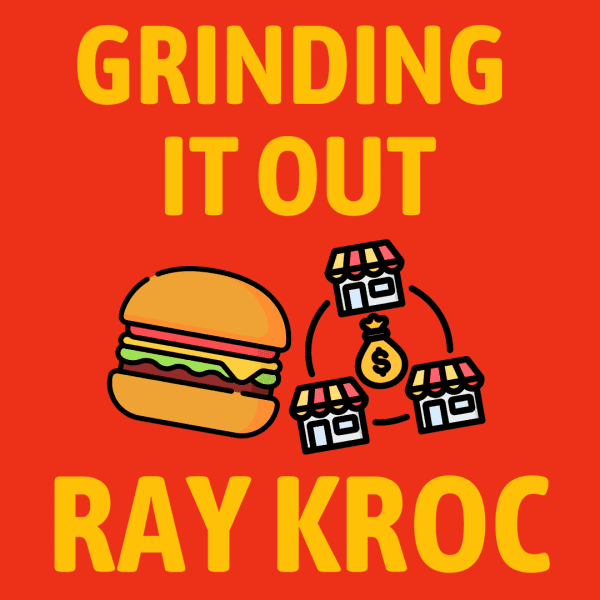


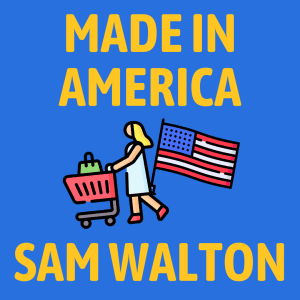
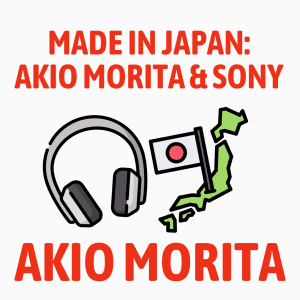

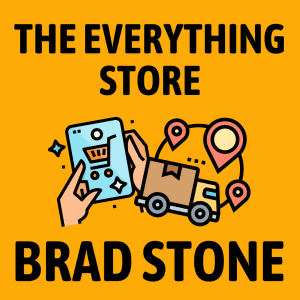
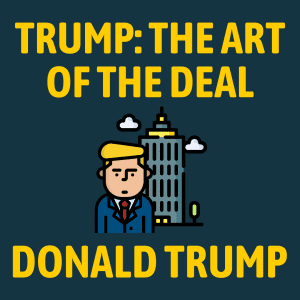
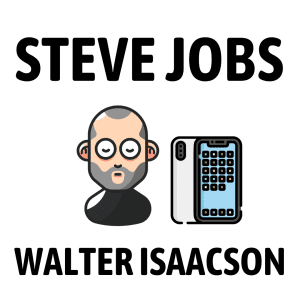

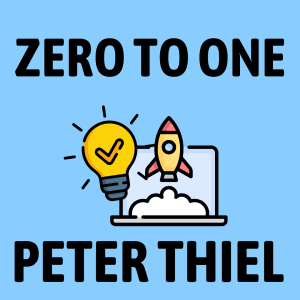

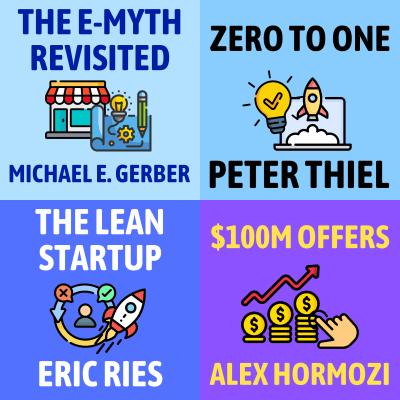
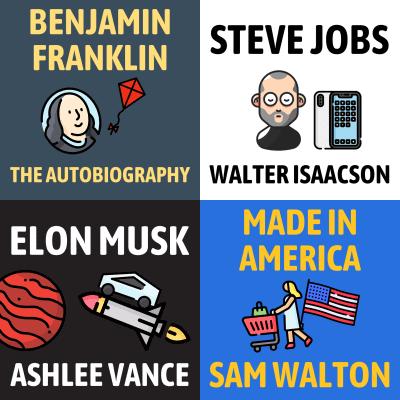
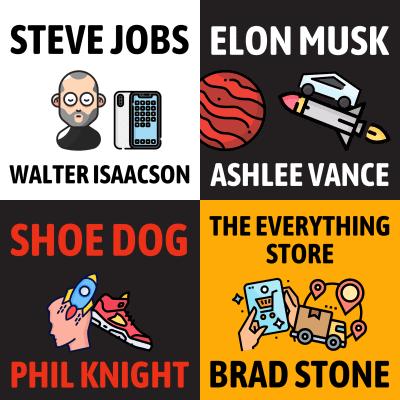
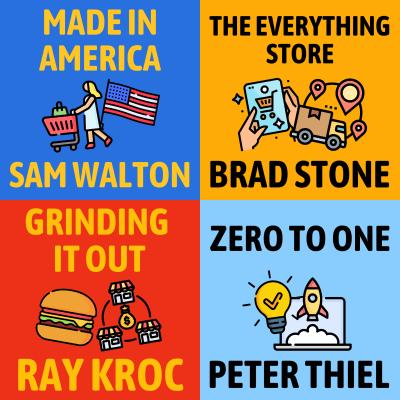











Community Notes